By Ahmad Arif
Printed in Kompas Cetak, 09 September 2008
Lasem, kota tua berhawa panas di pesisir utara Jawa Tengah pada tahun 1961. Seorang hoakiao muda membuat udara Lasem tambah gerah setelah mempersunting gadis Jawa, putri seorang panitera dan keponakan wedono dari Tulungagung, Jawa Timur.
Hoakiao – istilah untuk Cina perantauan – itu bernama Njo Tjoen Hian, putra perajin batik. Pernikahannya tersebut melawan arus masyarakat waktu itu, yang masih menganggap miring pernikahan antar-etnis dan antar-agama.
‘Pada waktu itu perkawinan Tionghoa dan Jawa biasanya delik-delik (sembunyi-sembunyi). Sementara saya menikah resmi di catatan sipil,’ kata Njo Tjoen Hian, yang sejak tahun 1959 lebih sering menggunakan nama Sigit Witjaksono ini.
Tentang namanya ini, Njo Tjoen Hian menjelaskan, ‘Sigit Witjaksono itu merupakan versi bahasa Jawa dari Njo Tjoen Hian. Artinya sama, yaitu kebaikan dan kebijaksanaan.’
Perjuangan Sigit mempersunting Marpat Rochani, putri priayi dari Jawa Timur, itu memang tidak mudah. Tak ada satupun keluarga dari pihak istrinya yang mau datang pada acara pernikahan mereka ketika itu. Sigit sampai merasa dipermalukan. ‘Saya menangis wkatu itu,’ kata Sigit.
Akan tetapi, dia tidak pupus harapan. Ia selalu mencoba untuk terus berbuat baik terhadap keluarga istrinya. ‘Lambat laun, mereka mulai ikhlas dan bisa menerima, apalagi setelah mereka melihat rumah tangga kami yang rukun. Wong belah gowo damar, Gusti Allah ora samar,’ kata Sigit mengutip pepatah Jawa, tentang Tuhan yang akan selalu menjaga.
Ketika keluarga dan warga sekitar mulai menerima perkawinan campur itu, tantangan justru datang dari pemerintah. Akta kelahiran anaknya diberi cap: akte kelahiran untuk warga keturunan Republik Rakyat Tiongkok (RRT). ‘Saya RRT saja tidak tahu bentuknya. Tanah Jawan ini tempat lahir dan mungkin tempat nanti saya mati juga. Kenapa seolah-olah kami belum juga diterima ?’ kata Sigit. Dimata Njo Tjoen Hian, pembauran antara Jawa-Cina sebenarnya bukan hal baru. ‘Saya keturunan hoakio (Cina perantauan) kedelapan di Lasem,’ kata Sigit menambahkan.
Rombongan awal para hoakiao ke Lasem itu semuanya laki-laki. Mereka kemudian menikah dengan orang-orang dari pesisir Lasem hingga Tuban. Setelah Belanda berkuasa di Jawa barulah didatangkan para pekerja dari daratan Cina untuk bekerja di pertambangan dan perkebunan. Sebagian di antaranya perempuan. Mulailah ada perbedaan antara Tionghoa totok dan Tionghoa peranakan. Antara mereka yang pribumi dan pendatang. ‘Belanda juga yang menciptakan pemisahan itu’ kata Sigit. Pemisahan itu semakin tajam setelah terjadi geger Cina – pemberontakan Cina terhadap Belanda – pada tahun 1740. Waktu itu, Lasem menjadi salah satu pusat perlawanan Cina terhadap Belanda. Penjajah Belanda sengaja menjauhkan orang Cina dan Jawa agar mereka tidak kembali bersekutu lalu melawan Belanda.
Batik Laseman
Jejak pembauran etnis Jawa dan Cina di Lasem itu, menurut Sigit, sangat jelas terlihat antara lain dalam selembar kain batik laseman.
‘Motif batik Lasem merupakan poduk silang budaya, terutama antara Jawa dan Cina,’ kata Sigit yang mewarisi usaha batik dari ayahnya, Njo Wat Jiang. Motif yang terpengaruh budaya Cina adalah burung hong, bunga seruni, banji dan mata uang. Adapun motif Jawa terlihat dari motif geometris khas batik vorstenlanden (Surakarta dan Yogyakarta), seperti parang, kawung dan udan liris.
Selain kedua motif itu, para perajin baik di Lasem juga mencipta motif lokal seperti latohan, gunung ringgit, dan kricak atau watu pecah. Konon, motif kricak (batu kecil) diinspirasikan dari kenangan atas kricak sebagai bahan pembuatan jalan Raya Pos era Daendels, yang membawa banyak korban pekerja di Lasem. Ketiga motif itu sering dipadu, seperti yang terlihat dalam motif batik tiga negeri.

Melalui budaya
Upaya Sigit untuk pembauran telah mendorongnya untuk membentuk paguyuban seni tari Tunas Harapan pada tahun 1977. Dalam paguyuban ini, Sigit membaurkan anak-anak Tionghos dengan etnis Jawa. Tarian yang sering mereka tampilkan adalah Srikandi Mustaka Weni dan Menakjingga-Dayun. Kelompok tari multietnis ini, pada waktu itu, laris diundang ke kota-kota lain hingga Semarang dan Magelang. Bahkan, pada tahun 1979, Tunas Harapan diundang tampil di Balai Sidang Jakarta, di hadapan Presiden Soeharto.
Sigit juga menjadi Ketua Yayasan Sekolah Dasar (SD) Wijayakusuma, yang mengelola SD di Lasem sejak tahun 1979 hingga 2002. Sebelum Sigit menjadi ketua yayasan, SD ini dicap eksklusif oleh masyarakat setempat karena 90 persen siswanya Tionghoa. Dia bertekad menghapus cap itu. ‘Saya datang dari rumah ke rumah, menemui keluarga Jawa agar mereka mau menyekolahkan anak mereka ke sekolah kami,’ tutur Sigit.
Selain menawarkan pendidikan kesenian tari, Sigit juga menyediakan pelajaran berbagai agama di sekolahnya itu. ‘Siswa bebas memilih pelajaran sesuai agama masing-masing. Hasilnya, 60 persen siswa SD Wijayakusuma sekarang etnis Jawa, ‘ kata Sigit yang ikut bermain dalam film Cau Bau Kan pada tahun 2002 ini.
Pewaris
Bulan Agustus 2008, lelaki itu duduk di beranda rumah. Dia mengenakan batik warna merah dan celana panjang katun hitam. Tubuhnya masih sehat dan gagah. Dari tempatnya duduk, dia bisa melihat seorang perempuan tua yang tengah membatik.
‘Pembatik di sini rata-rata sudah bekerja sejak saya masih kecil. Tetapi, belum ada anak-anak yang mau meneruskan usaha ini. Semuanya bisa dibilang memilih bekerja di luar kota. Lasem lalu menjadi kota mati,’ kata Sigit. Ada nada getir dari suaranya. Oleh karena itu, bagi Sigit, batik Lasem bukan sekadar urusan bisnis.
‘Batik Lasem adalah saksi sejarah, tentang pembauran budaya, yang tidak boleh hilang, ‘tuturnya.

[Post note: another story about Lasem and its family history as represented by my uncle, Njo Tjoen Hian, fifth child in the family from my father’s side. Njo Wat Jiang is the name of my grand father. He was born and died in Lasem.
In the original transcript, the term of ethnic Chinese as ‘China’, I do not believe this is the correct term in Bahasa Indonesia. It should be Cina, therefore I take the liberty to change.]
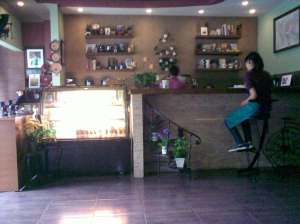

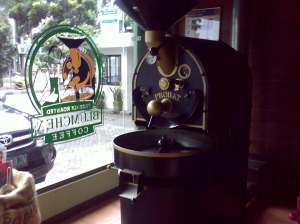




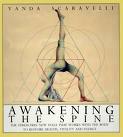
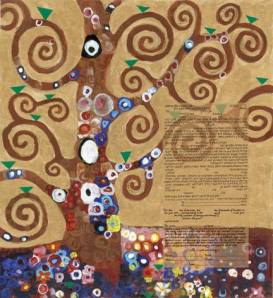
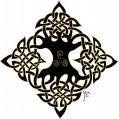

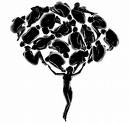
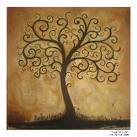
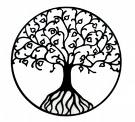
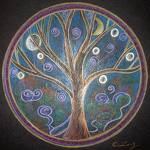




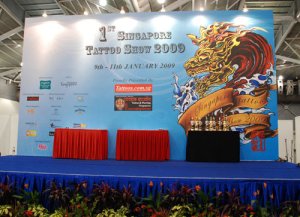



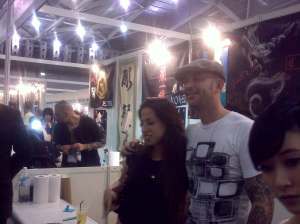

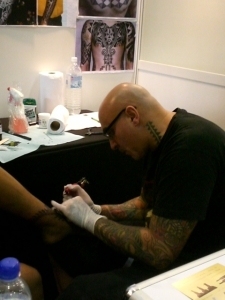

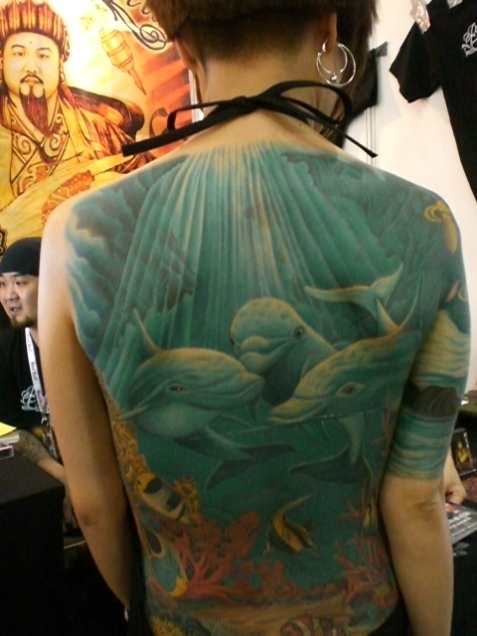 There were many more studios from Italy, Germany, Netherlands, Sarawak/Malaysia, Australia and host country, Singapore. 5 booths of talented Indonesian tattoo artists and studio, mostly from Jakarta participated, too. Among others:
There were many more studios from Italy, Germany, Netherlands, Sarawak/Malaysia, Australia and host country, Singapore. 5 booths of talented Indonesian tattoo artists and studio, mostly from Jakarta participated, too. Among others: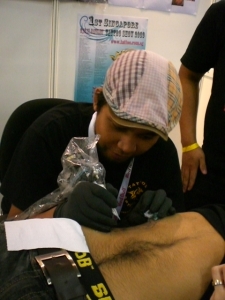

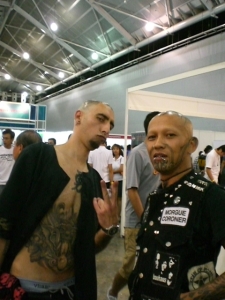



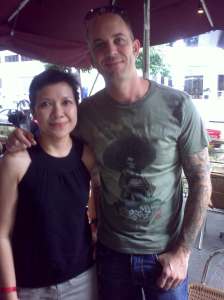

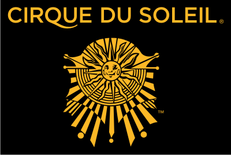 I
I
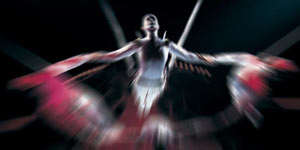
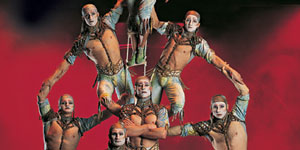

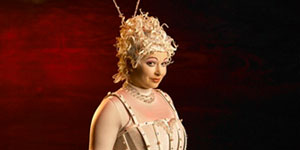
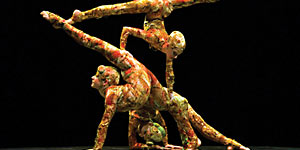
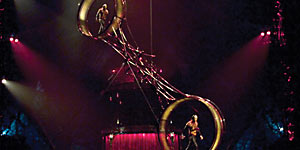

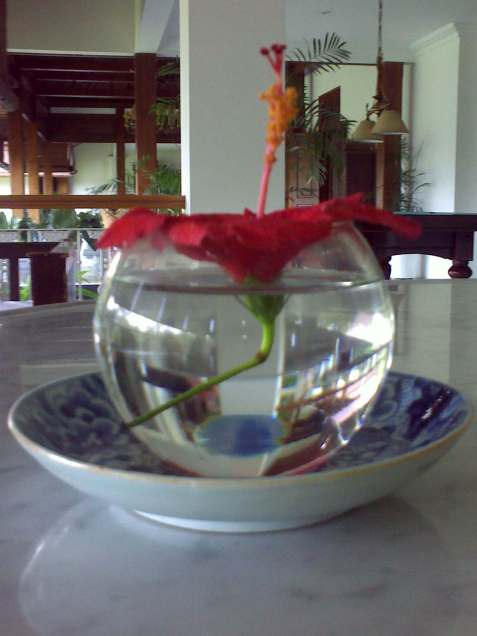
You must be logged in to post a comment.